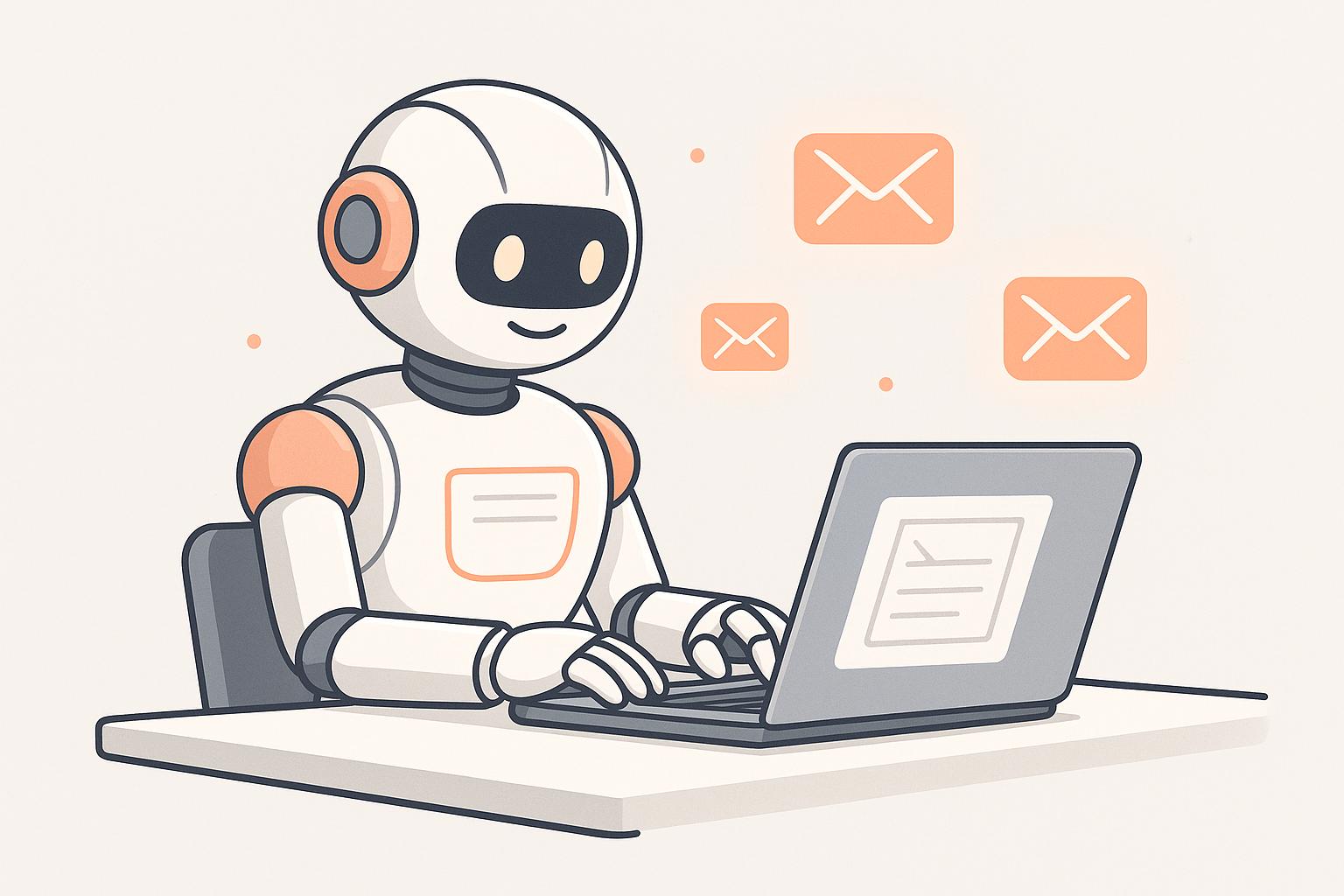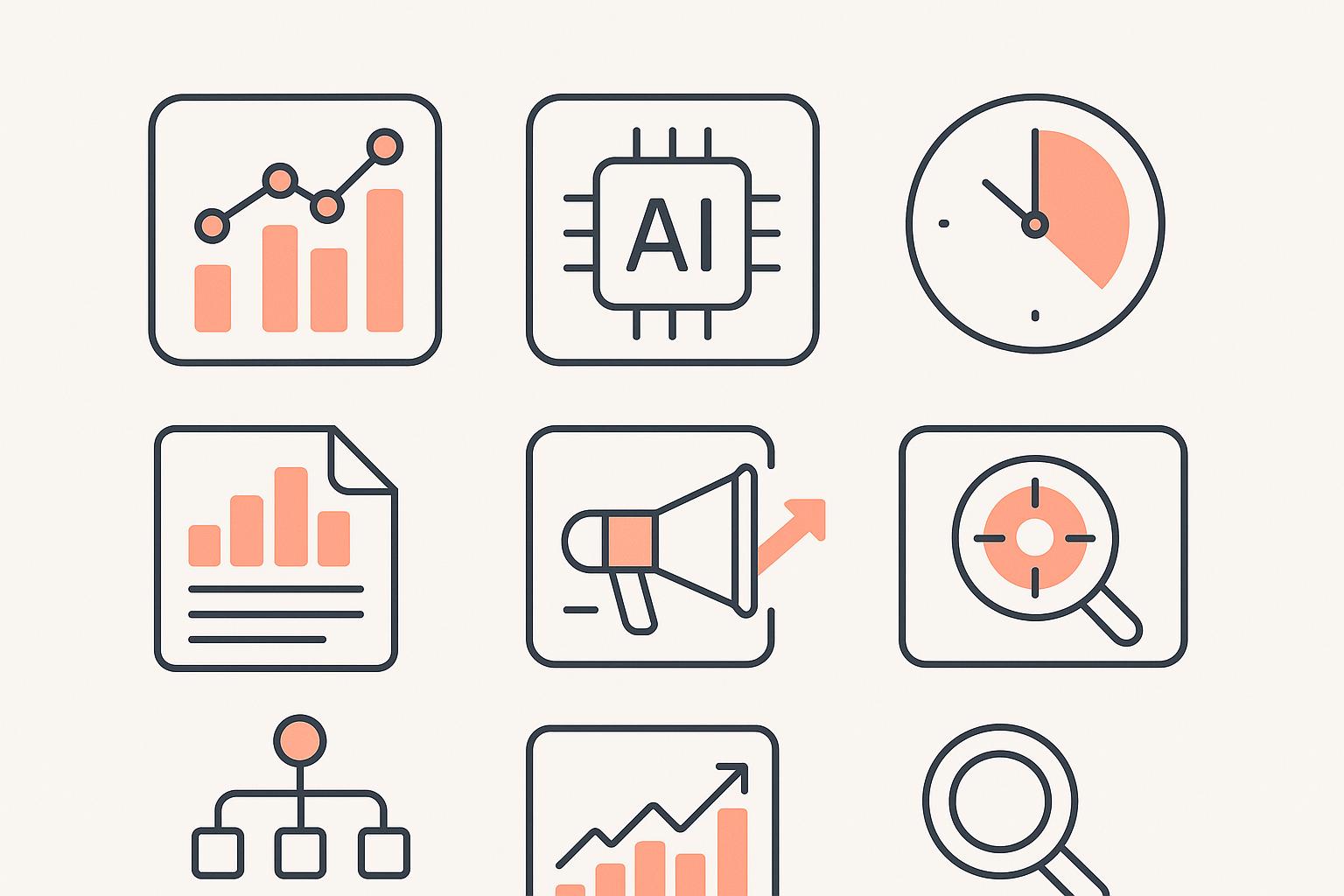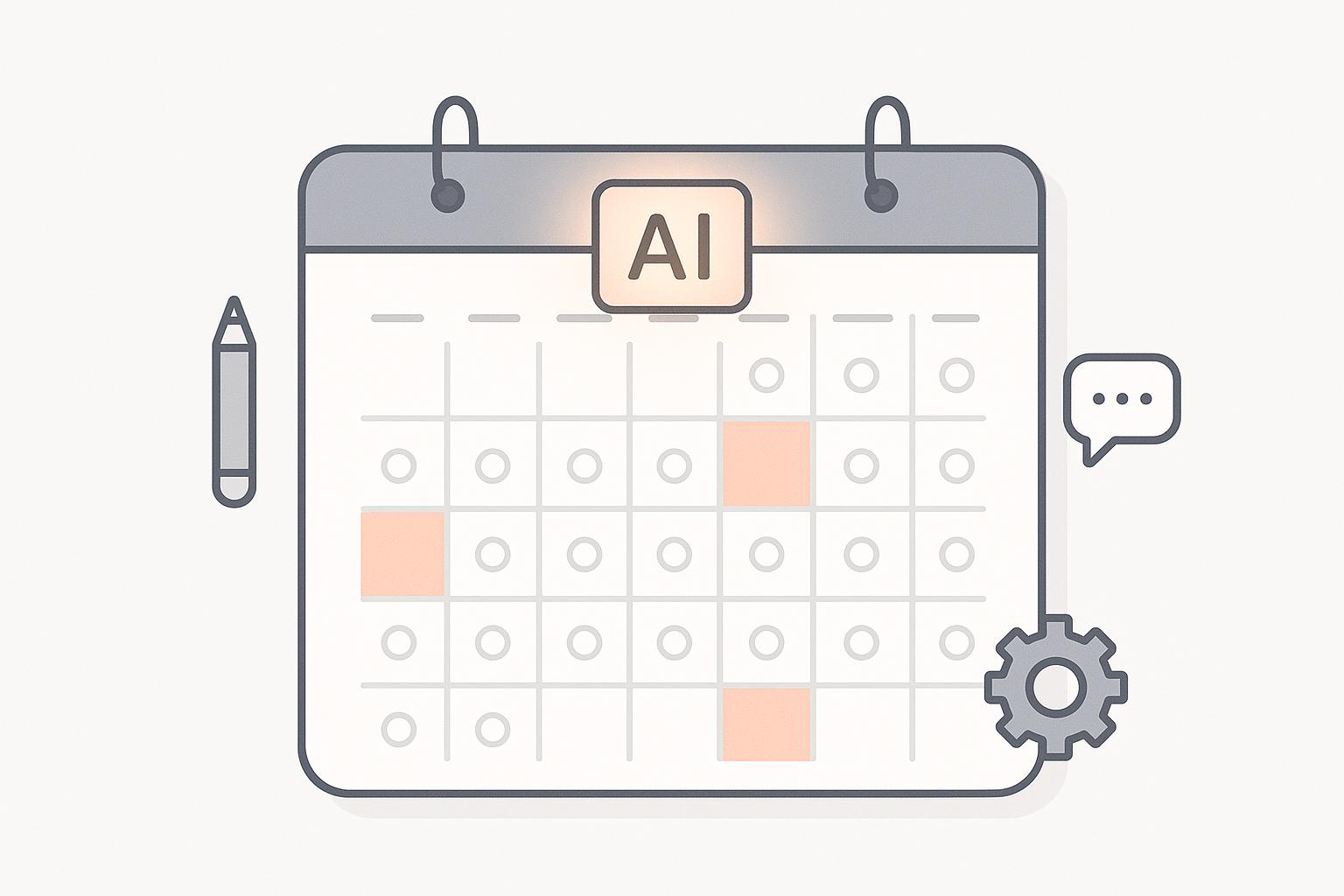AI is transforming content marketing by saving time, improving results, and creating personalized experiences. Businesses like ClickUp, Sephora, and Coca-Cola are using AI tools to boost traffic, enhance customer engagement, and increase sales. Here’s what they achieved:
- ClickUp: Used SurferSEO to optimize 150+ blog posts, increasing organic traffic by 85% and driving up to 8,502% growth on key pages.
- Sephora: Leveraged AI tools like Virtual Artist and Color Match to personalize online shopping, reducing product returns by 30% and increasing online sales to $3 billion.
- Coca-Cola: Adopted AI for real-time campaign monitoring and content creation, doubling ROI and cutting production time by 40%.
Key Takeaways:
- Use AI to save time and automate repetitive tasks.
- Personalize customer experiences to boost engagement and sales.
- Combine AI’s data-driven insights with human creativity for better results.
Whether you’re a small business or a global brand, the right AI tools can help you achieve measurable growth and efficiency.
How To Use AI to Make Content Marketing 10X Easier
Case Study 1: ClickUp's Growth with SurferSEO
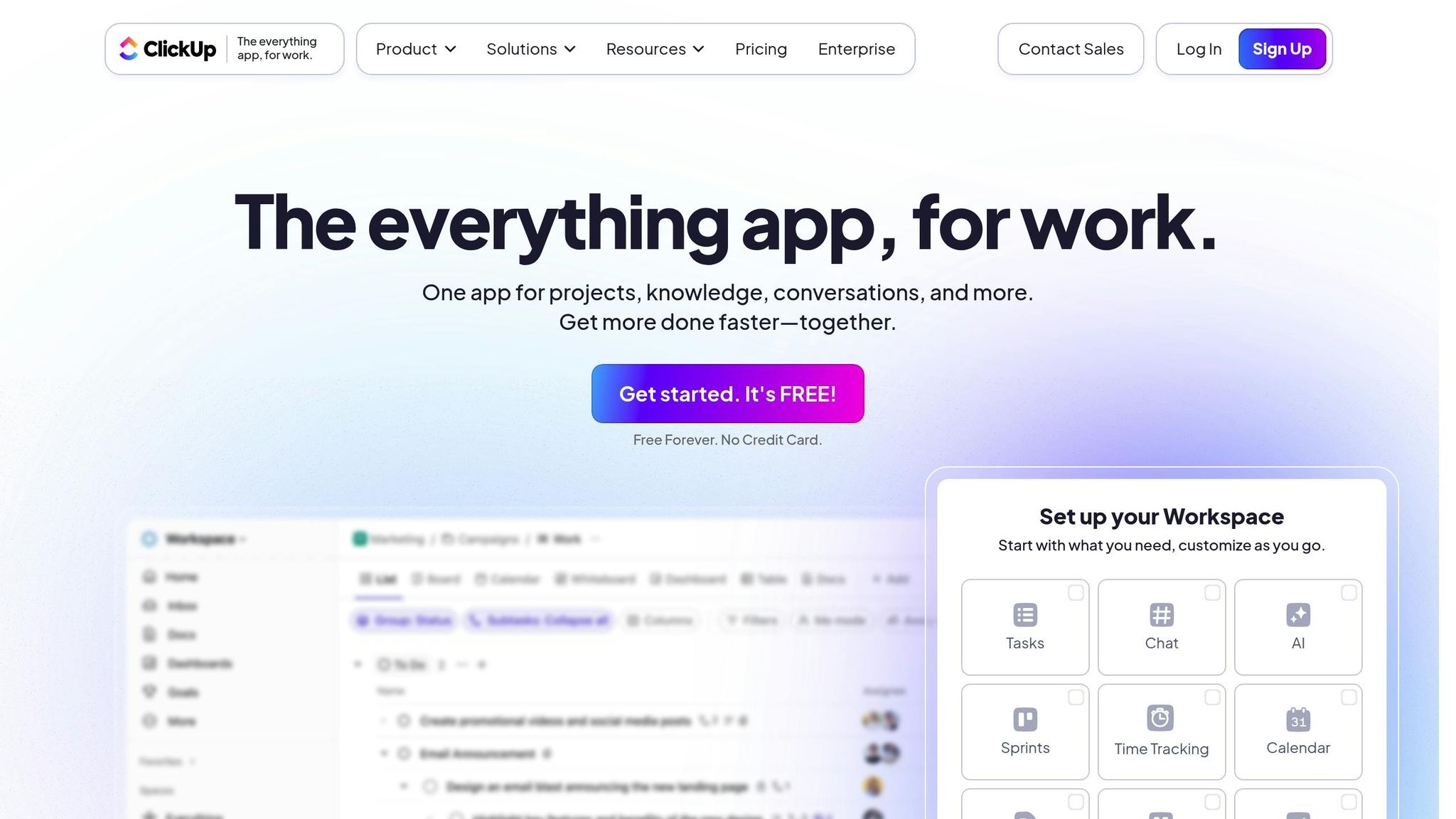
ClickUp faced the challenge of scaling content optimization for its extensive blog of over 500 articles while meeting ambitious growth goals.
The Strategy: AI-Powered SEO Optimization
In early 2021, ClickUp adopted SurferSEO to streamline its entire content process. By replacing manual analysis with a data-driven strategy, they transformed how they approached SEO.
The team relied on SurferSEO's SERP Analyzer for detailed keyword research, examining ranking factors and competitor strategies. For content briefs, they used the Content Editor, which guided them on essential headers, target word counts, and additional semantic keywords often overlooked in initial research.
"The Content Editor is a useful tool when making briefs. It helps me compare articles to see what headers should be included, gives a general word count, and provides terms that should be included other than just the keywords I find in my keyword research. It's a great place to start your process if you are making briefs."
– Adele Payant, ClickUp's SEO Specialist
Blog writers received shared Content Editor links within their briefs, ensuring clarity on content goals and enabling them to track progress in real time.
"Surfer's value begins even before drafting starts. Our blog briefs come with a shared Content Editor link created by the SEO team, so there's no misinterpretation of the blog's intent. From there, I can take advantage of the research they've put together and get to work. I can save about 3 hours per blog during the writing process, from the first draft to the published piece."
– Erica Golightly, ClickUp's Senior Writer
For ongoing updates, the team used SurferSEO's Audit Tool to pinpoint areas for improvement across their existing content library. This approach allowed them to prioritize updates based on data rather than guesswork.
The Results: Traffic and Visibility Growth
With SurferSEO, ClickUp achieved an 85% increase in organic traffic through the optimization of 150+ blog posts and 130+ updates. The impact of these efforts was especially evident in their key pages. For example, between May 1st and November 17th, 2024:
- The "25 Best Free Project Management Software Tools" page skyrocketed from 2,707 clicks to 25,428 clicks - an 839% increase.
- The "20 Best Task Management Software" page jumped from 975 clicks to 30,129 clicks, an astounding 2,990% growth.
- The "15 Best Project Management Tools" page surged by 8,502%, growing from 176 clicks to 15,140 clicks.
By focusing on just four critical pages, ClickUp regained over 90,000 monthly clicks.
"Surfer has quickly become essential in our SEO workflow at ClickUp. The search console integration with Content Planner has helped us automate crucial steps in our optimization process. With an unmatched NLP engine and easy-to-use content editor, Surfer is a key addition to any SEO team's toolbox."
– Jeremy Galante, Senior SEO Manager at ClickUp
Lessons Learned
ClickUp's journey offers valuable takeaways for businesses aiming to scale their content marketing efforts with AI tools. By fully integrating SurferSEO into every stage of their workflow, they streamlined collaboration between SEO specialists and writers, saving time and maintaining consistent quality.
"For each optimization, I would say that Surfer's Audit tool saves me about an hour. I always start out my optimizations with the Audit feature to get an overview of how the content is stacking up compared to competitors. The content score is really useful because it can help me identify if a page has content or topical issues or if I need to look elsewhere."
– Adele Payant, ClickUp's SEO Specialist
This case demonstrates that even smaller teams can achieve results on par with larger enterprises by leveraging AI effectively. ClickUp's success sets a high standard for content marketing and hints at the potential for future AI-driven advancements. Up next, discover how a major retail brand uses AI to create personalized customer experiences.
Case Study 2: Sephora's Personalized Content Through AI
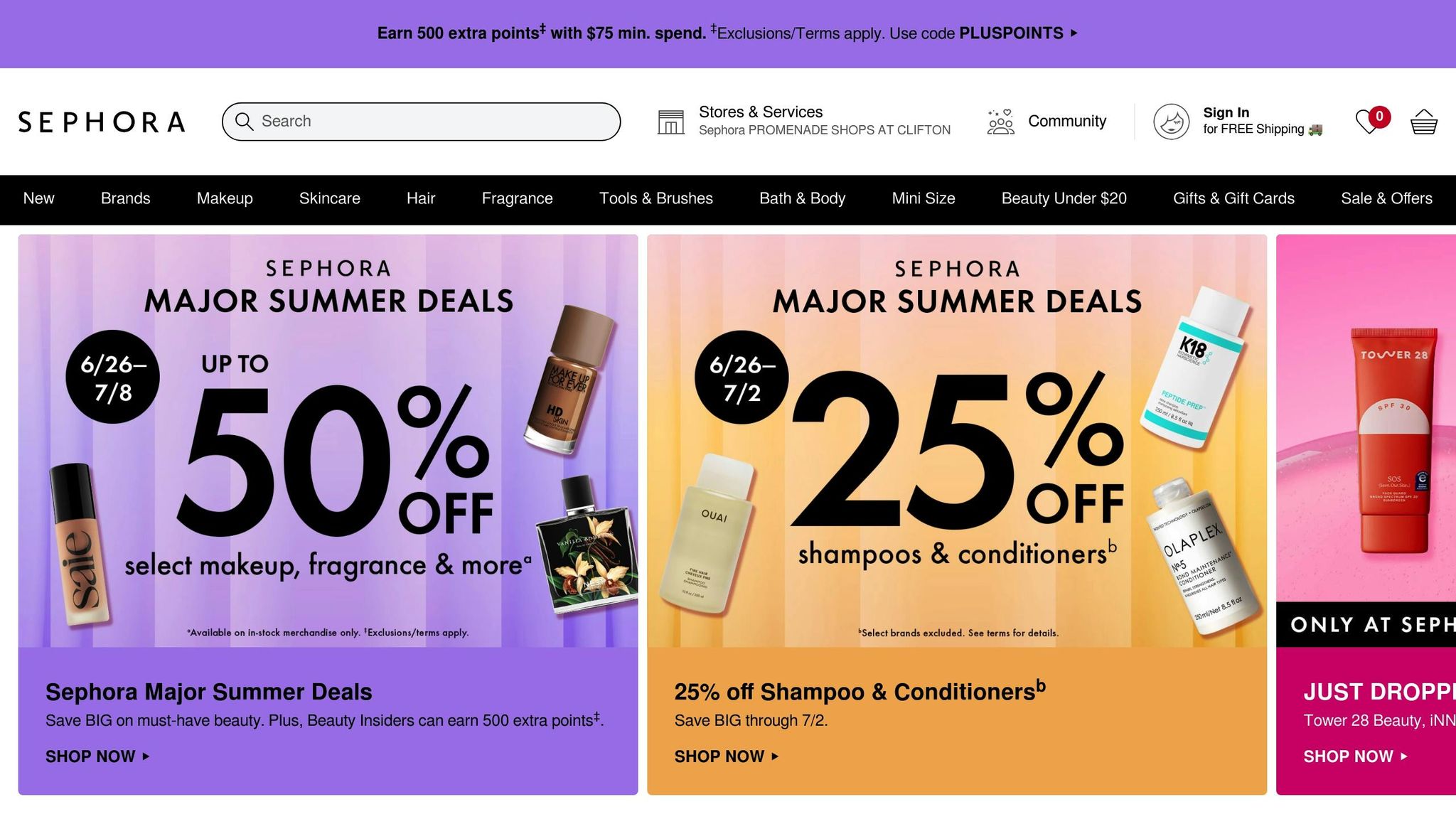
Sephora faced a major challenge: how to replicate its well-loved in-store experience online. With a massive catalog of beauty products and growing customer service demands, the retailer needed a way to guide customers toward the right products - without in-person consultations or hands-on testing.
The Strategy: AI-Powered Virtual Tools
Sephora turned to AI to create a personalized, seamless shopping experience. The company introduced tools like Virtual Artist for real-time makeup try-ons, Color Match for tailored product recommendations, and the Reservation Assistant for easy customer service interactions. Together, these features bridged the gap between digital and in-store shopping, redefining how customers interact with Sephora.
At the heart of this strategy was Sephora Virtual Artist, an augmented reality tool powered by facial recognition and AI. Using their smartphone cameras, customers could virtually try on makeup - testing shades of lipstick, eyeshadow, and more - eliminating the guesswork of online beauty shopping.
Sephora Color Match took personalization even further. By analyzing data like skin tone, past purchases, and browsing behavior, it provided customized product suggestions tailored to each customer.
On the customer service side, Sephora introduced the Sephora Reservation Assistant in 2016. Integrated with Facebook Messenger, this AI chatbot handled appointment bookings, product questions, and basic support, making it easier for customers to move from browsing online to visiting a store.
Sephora also enhanced its Beauty Insider loyalty program with AI-driven data analysis. By tracking customer behavior across both online and in-store channels, the company created personalized rewards, promotions, and offers that reflected individual shopping habits.
Parham Aarabi, CEO of ModiFace, praised Sephora’s forward-thinking approach:
"Before Sephora, we would have to go to brands and try to motivate them and show them why technology could make sense for their business. Sephora has gotten it from day one, wanting and incorporating new ideas. It's great to have a partner that believes in technology."
The Results: Enhanced Customer Experience and Sales
Sephora’s AI initiatives quickly delivered impressive results, improving both customer engagement and sales. The Virtual Artist tool stood out, with users being 3 times more likely to complete a purchase after using it.
Another major win: a 30% reduction in makeup product returns, thanks to customers being able to try products virtually before buying.
Customer engagement also saw a boost. Average app session times jumped from 3 minutes to 12 minutes, and within two years of launching Virtual Artist, the tool facilitated 200 million virtual try-ons and 8.5 million visits.
Financially, the AI-powered recommendation system proved effective, driving a 25% increase in average order value and a 17% rise in repeat customers. Customers who engaged with personalized recommendations were 3.2 times more likely to complete a purchase.
On the customer service front, AI chatbots handled over 75% of daily inquiries, cutting response times to under 10 seconds and reducing cart abandonment by 18% for users who interacted with the chatbot. The Reservation Assistant also excelled, boosting booking rates by 11% while simplifying the appointment process.
These efforts translated into significant business growth. Sephora’s online sales skyrocketed from $580 million to $3 billion over six years. Additionally, chatbot implementation reduced customer service operational costs by 20%.
Lessons Learned
Sephora’s success highlights the power of AI when it directly addresses customer needs. The Virtual Artist eliminated the uncertainty of buying makeup online, while personalized recommendations helped customers navigate Sephora’s vast product selection.
The company’s ability to integrate AI tools across multiple touchpoints was key. By connecting features like Virtual Artist and Color Match with the loyalty program, Sephora created a unified experience that seamlessly blended digital and in-store interactions. As Sephora’s VP of Omnichannel explained:
"If a customer browsed online then bought in store, we can see that. We just weren't looking at it before, but it's a win for both channels... We're more aligned, and we can move faster across in-store, online and mobile strategies. Mobile is the glue that holds it all together."
Another takeaway: patience and iteration are essential for AI success. Instead of relying on a single tool, Sephora developed an interconnected ecosystem where each feature enhanced the others, offering multiple ways for customers to engage.
Finally, Sephora showed that AI should complement human expertise, not replace it. By amplifying the brand’s beauty knowledge and making it accessible anytime, Sephora kept the human touch at the core of its customer experience.
This case sets the stage for the next example, where AI reshapes campaign performance in new ways.
Case Study 3: Coca-Cola's Social Media Campaign Optimization
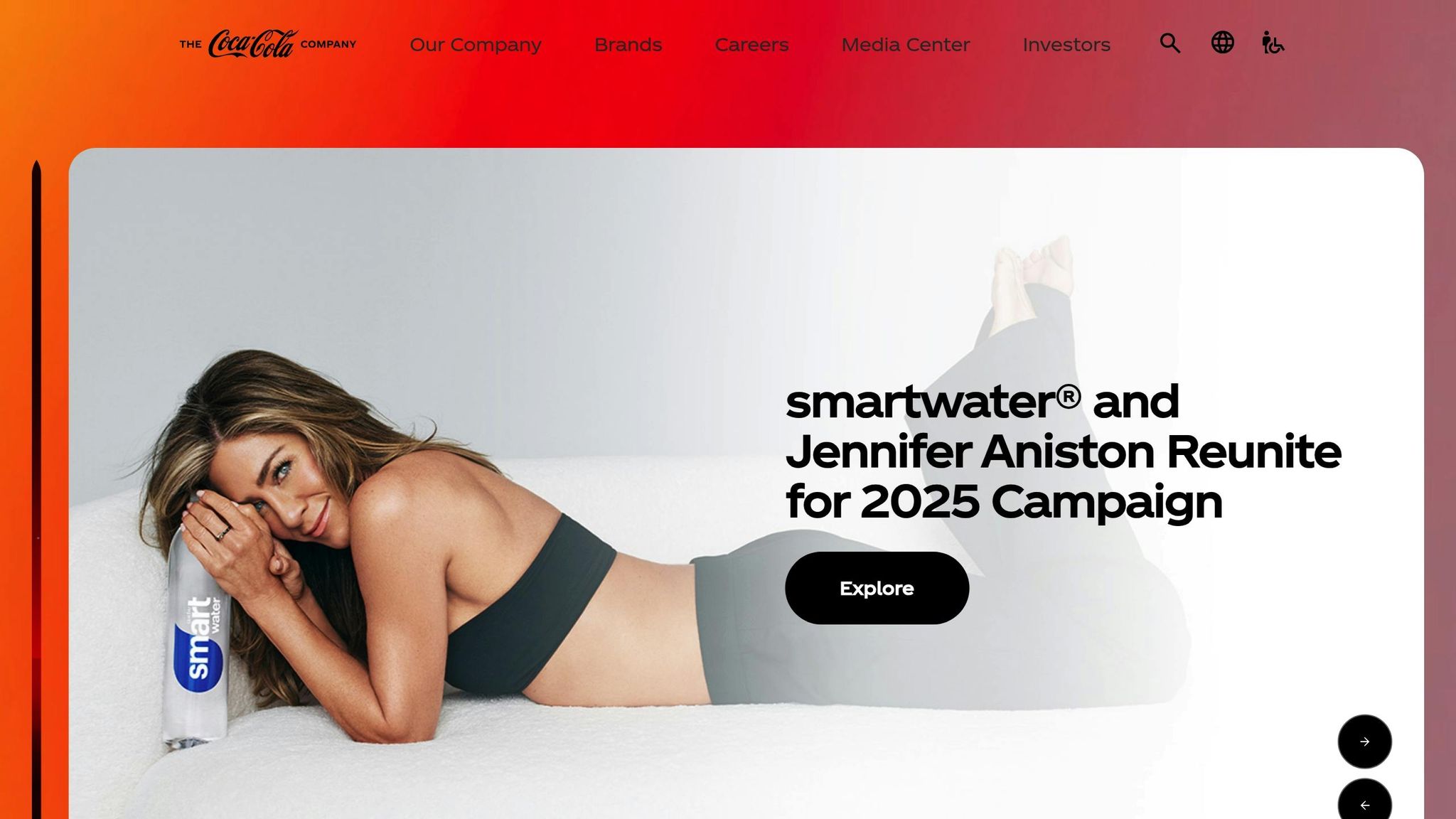
Coca-Cola faced a tough challenge: making the most of its $4 billion annual advertising budget in a digital world where consumers are spread across countless platforms, and trends shift in real time. The company needed a faster, smarter way to track, analyze, and refine its marketing strategies.
Traditional methods of managing campaigns just couldn’t keep up. Manually analyzing brand mentions, tracking sentiment, and measuring campaign performance often took too long. By the time insights were gathered, the moment to act had already passed. To stay ahead, Coca-Cola turned to AI for real-time decisions.
The Strategy: Real-Time Analytics and Targeted Content
Coca-Cola transformed its social media strategy by teaming up with leading AI companies. In 2024, it invested $1.1 billion in Microsoft’s cloud and AI tools. This brought Microsoft’s Azure OpenAI Service and Microsoft 365 Copilot into Coca-Cola's operations, enabling real-time campaign analysis.
The company also collaborated with NVIDIA and WPP, integrating tools like NVIDIA Omniverse and other generative AI technologies into its content creation process. This allowed Coca-Cola to tailor marketing content for over 100 markets worldwide.
Additionally, Coca-Cola partnered with Bain & Company and OpenAI, using tools like ChatGPT and DALL-E to speed up campaign development and refine marketing strategies.
A key part of their strategy was real-time social media monitoring. AI systems tracked brand mentions, sentiment, and public perception across platforms, offering immediate insights into customer feedback and emerging trends. This allowed Coca-Cola to move beyond broad demographic targeting, focusing instead on behavior-based personalization.
The company also took a smarter approach to influencer partnerships. Instead of focusing solely on follower counts, AI evaluated influencers based on their actual engagement and conversion rates, ensuring more effective collaborations.
AI-powered chatbots played a big role too. By using location data and conversational tone, these chatbots delivered more natural, localized interactions, enhancing user experiences.
The Results: Boosted Engagement and Reduced Costs
The results of Coca-Cola’s AI-driven strategy were undeniable. Personalized content led to a 20% increase in social media engagement, while tailored email campaigns saw a 15% higher conversion rate compared to generic approaches.
The financial impact was just as impressive. During a summer campaign, AI-generated content drove a 25% increase in online sales. Interactions on social media rose by 45%, and targeted campaigns boosted product sales by 60%.
Operationally, Coca-Cola became far more efficient. By automating ad content creation, the company cut content production time by 40%. This freed up marketing teams to focus on strategy and creativity while AI handled repetitive tasks.
In Latin America, Coca-Cola’s AI systems analyzed social media interactions and found that vibrant visuals and culturally resonant designs drove the most engagement. Using this insight, the company created ads featuring colorful imagery and regional music, which performed 30% better than previous campaigns.
Perhaps the most striking result was Coca-Cola’s ability to double its return on investment (ROI). AI didn’t just improve engagement; it delivered tangible business results.
CEO James Quincey highlighted the practical benefits:
"The initial pilots indicate that customers who receive AI-generated push notifications are more likely to make purchases based on the recommended SKUs, which results in incremental retail sales."
Lessons Learned
Coca-Cola’s journey shows how AI can enhance both creativity and efficiency. As Javier Meza, Coca-Cola's President of Marketing and Europe CMO, put it:
"One of the things we keep repeating in Coca-Cola is it's about AI and HI. It's artificial intelligence and human intelligence and ingenuity. I really believe our opportunity as humans is to continue to work on the creative side, on the values side, and use AI to scale ideas."
Strategic partnerships were key to Coca-Cola’s success. Instead of building everything from scratch, the company leveraged expertise from Microsoft, NVIDIA, OpenAI, and others to access cutting-edge tools without long development timelines.
Real-time data analysis was another game-changer. By monitoring sentiment and engagement as it happened, Coca-Cola could adjust campaigns instantly, staying relevant and capturing trending moments.
Coca-Cola also learned the value of localizing content. The success of their Latin America campaign showed that AI is most effective when it considers regional preferences and cultural nuances.
Pratik Thakar, Coca-Cola’s VP and Global Head of Generative AI, stressed the importance of balance:
"We wanted to use AI, not just for the sake of using AI, but to use AI where its strengths lie. Also, at the same time, we wanted to make sure that the humanity and originality and craftsmanship is there."
Finally, Coca-Cola demonstrated that AI’s benefits extend beyond just marketing metrics. The 40% reduction in content production time allowed teams to focus more on strategic and creative work, leading to better overall campaign quality.
For brands looking to maximize their digital marketing efforts, Coca-Cola’s approach offers a clear path forward: combine cutting-edge AI with human creativity to build meaningful connections and achieve measurable success.
sbb-itb-ad96eed
Key Takeaways for AI Content Marketing Success
Drawing inspiration from the achievements of ClickUp, Sephora, and Coca-Cola, we can identify several strategies that lead to success in AI-driven content marketing. These companies didn’t just stumble upon AI tools - they carefully implemented them to achieve measurable outcomes across their marketing efforts. As highlighted in the case studies, effective use of data, personalized experiences, and a balance between human creativity and AI efficiency are key components.
Actionable Insights from the Case Studies
Start with clean data and clear objectives. A successful AI strategy begins with well-organized data and defined goals. Take Netflix, for example - their AI-powered recommendation engine drives more than 80% of the content watched on the platform. This is a testament to how a methodical approach to data can yield impressive results.
Emphasize personalization at scale. AI excels at delivering tailored experiences. Starbucks uses AI to analyze customer data, such as purchase habits and local weather, to provide personalized recommendations through its mobile app. This approach has significantly boosted customer engagement.
Blend AI efficiency with human creativity. The best results come from combining AI’s analytical power with human ingenuity. Harley-Davidson demonstrated this by using an AI platform to refine ad targeting in New York, achieving a 40% jump in qualified leads and an astounding 2,930% return on ad spend in just three months. Christina Inge, a Harvard instructor, sums it up perfectly:
"Your job will not be taken by AI. It will be taken by a person who knows how to use AI. So, it is very important for marketers to know how to use AI."
- Christina Inge, Instructor at the Harvard Division of Continuing Education's Professional & Executive Development
Automate repetitive tasks and optimize in real time. Automation can save up to 80% of the time spent on content creation while cutting related costs by 30%. Additionally, AI-powered analytics can boost marketing ROI by 39% by quickly identifying trends and acting on them. This frees up marketing teams to focus on larger, strategic goals.
Leverage AI to anticipate trends. The most effective AI strategies don’t just analyze past data - they predict what’s coming next. For instance, a European telecommunications company used AI to craft hyper-personalized messages for 150 audience segments. The result? A 40% increase in response rates and a 25% reduction in costs.
These insights are further illustrated in the table below, which connects specific AI tools to their practical applications.
Comparison Table: AI Tools and Their Applications
| Tool Category | Primary Strength | Best Use Case | Typical Results |
|---|---|---|---|
| SEO Optimization Tools | Content analysis and improving search rankings | Boosting organic traffic and optimizing content | 50% increase in organic traffic |
| Personalization Platforms | Customizing individual customer experiences | E-commerce recommendations and targeted messaging | 30% higher click-through rates, 22% higher retention |
| Social Media Analytics | Real-time campaign monitoring and sentiment analysis | Brand monitoring and campaign optimization | Significant engagement boosts (e.g., Coca-Cola saw an 870% improvement) |
| Content Generation Tools | Automated content creation at scale | Blog posts, ad copy, and social media content | 113% increase in content production |
| Email Marketing AI | Personalizing messages and optimizing send times | Retention and engagement campaigns | 24% higher open rates, 25% more click-throughs |
| Predictive Analytics | Forecasting customer behavior and trends | Campaign planning and budget allocation | 76% higher ROI, 40% more conversions |
AI-powered personalization continues to deliver exceptional results. For instance, companies using AI in retail report that 62% of customers become repeat buyers, and personalized experiences improve customer retention by 22%.
To succeed, companies must do more than adopt AI tools - they need to integrate them strategically. By using AI as a system to understand and serve customers better, businesses consistently outperform those that don’t.
Finding the Right AI Tools for Your Business
Once you've seen how AI can transform marketing strategies, the next step is choosing the tools that fit your business. With so many AI marketing options out there, it’s easy to feel overwhelmed. But the success stories we’ve covered show that it’s not about using every tool - it’s about picking the ones that solve your specific challenges. The key is to focus on tools that directly address your biggest marketing hurdles.
Start by identifying the areas where you’re struggling the most. Is content creation eating up too much time? Are analytics or personalization efforts falling short? Prioritize tools that can tackle the tasks that are costing you the most time or money.
Many businesses find success by starting small. Instead of diving into multiple AI platforms all at once, focus on one or two tools that can automate your most repetitive tasks. This approach helps you ease AI into your workflow without overwhelming your team - or your budget.
Speaking of budgets, this is especially important for smaller teams. Look for tools that offer free trials or flexible pricing plans. Many platforms provide options that let you test their capabilities without locking you into a long-term commitment. Free versions can be a great way to see if a tool meets your needs before spending a dime.
When evaluating tools, consider factors like ease of use, scalability, data accuracy, customer support, potential return on investment, brand reputation, and security features. This is where resources like AI Marketing List make the process easier.
How AI Marketing List Can Help
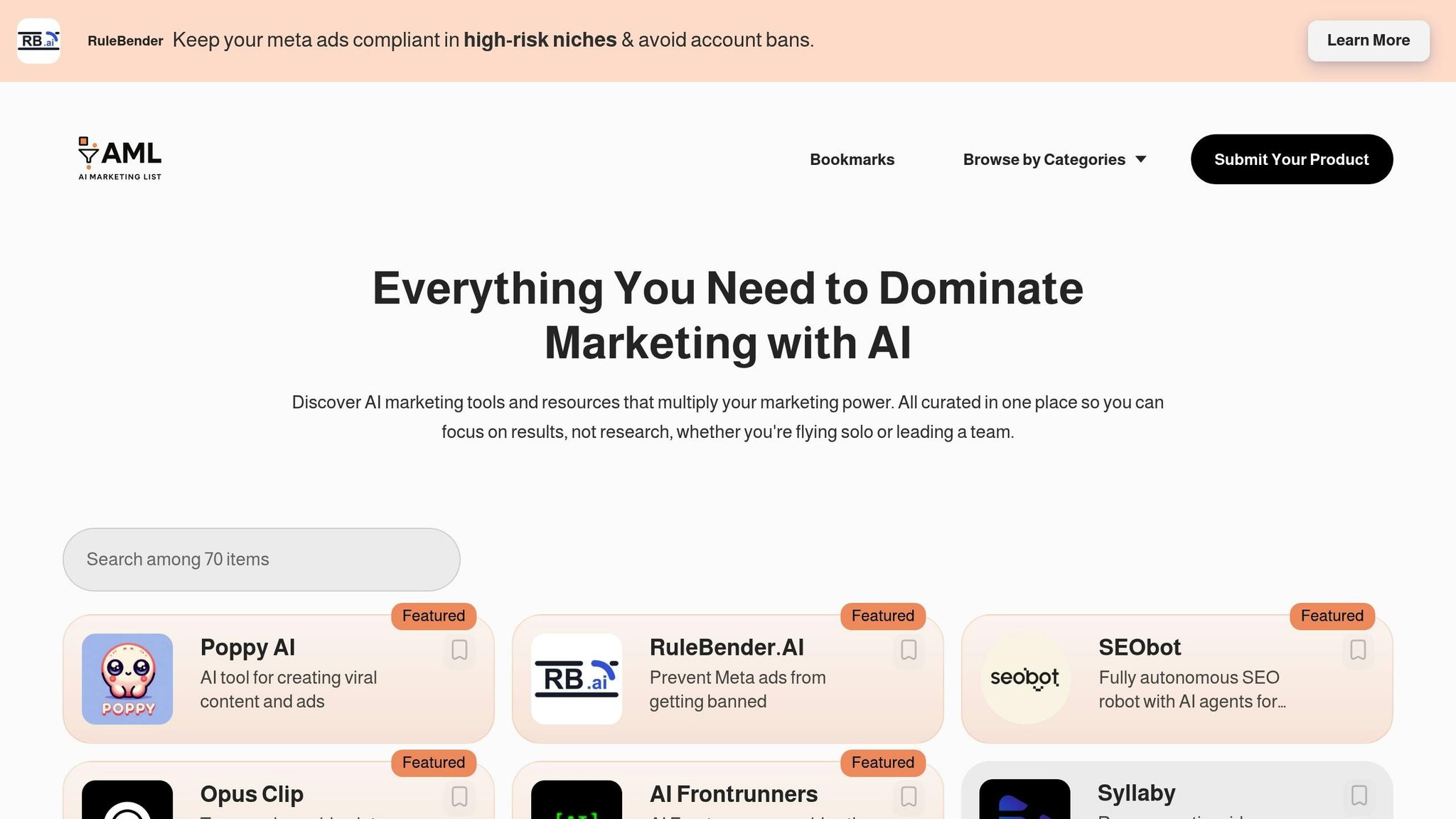
AI Marketing List is a resource built to simplify your search for the right tools. Whether you're a solopreneur, marketer, content creator, or business owner, this directory helps you discover AI solutions tailored to your marketing needs. Instead of scouring the internet for hours, you can browse tools organized into categories that address specific challenges.
The directory is divided into clear sections such as Content Creation, SEO and Keyword Research, Analytics and Insights, Email Marketing, Social Media Marketing, Advertising and PPC, Automations and Workflows, Agencies, and Courses. This structure makes it easy to find tools that align with the strategies highlighted in the case studies.
Each listing provides essential details like a brief description, logo, and direct link to the product’s website, helping you quickly evaluate your options. Whether your goal is to improve SEO, deliver personalized customer experiences, or boost social media engagement, this platform is a practical starting point.
For small business owners in particular, AI Marketing List saves time and money. Instead of wasting resources on trial-and-error, you can explore options that other marketers and business owners have already found useful.
AI tools can take care of tasks like automating customer service, speeding up content creation, and enhancing data analysis. This frees up your time for creative and strategic decisions. With the right tools in place, your AI-powered marketing success story could be just around the corner.
Conclusion: Using AI for Marketing Success
The success stories we've discussed highlight AI as a powerful tool delivering measurable outcomes. For instance, Tomorrow Sleep achieved a staggering 10,000% traffic increase, while Adobe generated an impressive $10.8 million in additional revenue - all by integrating AI effectively into their marketing strategies.
Right now, 69.1% of marketers are already using AI, and 78% plan to automate more than a quarter of their tasks with AI within the next three years. Across industries, businesses are seeing real benefits, like a 30% rise in email click-through rates, a 40% boost in cross-selling success, and a 50% improvement in sales team efficiency.
These numbers underline three major benefits of AI in marketing: personalization at scale, data-driven insights, and enhanced operational efficiency. Together, these deliver better customer experiences, increased engagement, and stronger ROI.
To succeed with AI, start by identifying your biggest marketing challenges - whether it’s creating content, personalizing customer interactions, or analyzing data. Then, focus on tools designed to solve those specific issues. The examples of ClickUp, Sephora, and Coca-Cola show that a careful, step-by-step approach works best. Even Coca-Cola built its AI capabilities over time, using customer feedback and performance data to refine its strategy.
For businesses ready to dive into AI, platforms like AI Marketing List can help you get started. They offer categorized tools for Content Creation, SEO and Keyword Research, Analytics and Insights, and Social Media Marketing, making it easier to find solutions tailored to your goals.
AI has the potential to reshape marketing in profound ways. But success depends on setting clear objectives, leveraging quality data, and refining your approach over time. The companies featured here didn’t achieve their results overnight - they invested in understanding their customers, experimenting with different strategies, and optimizing their efforts continuously.
The next big AI-driven marketing success could be yours. The real question is: how soon will you embrace AI to unlock its potential for your business?
FAQs
How can small businesses use AI tools to enhance their content marketing efforts?
Small businesses can tap into the power of AI tools to simplify and enhance their content marketing efforts. These tools can handle time-consuming tasks like crafting social media posts, writing blog articles, or generating product descriptions. By automating these processes, businesses can produce quality content faster, ensuring they remain consistent and relevant in their messaging.
On top of that, AI-powered customer relationship management (CRM) tools can analyze customer behavior and data to identify new marketing opportunities. This insight helps businesses design more targeted campaigns and make smarter, data-driven decisions. With the addition of no-code AI tools that integrate smoothly with existing platforms, even small businesses with tight budgets can scale their marketing efforts efficiently and effectively.
What challenges might businesses face when using AI for content marketing, and how can they address them?
Businesses integrating AI into their content marketing strategies might face a few hurdles. These include producing content that truly resonates with their audience, navigating the sheer variety of available tools, and addressing ethical concerns like bias in AI-generated material. To address these challenges, companies should set clear ethical standards, routinely evaluate AI outputs for both quality and fairness, and ensure their teams are well-versed in using these tools effectively.
To avoid common missteps, such as generating repetitive or overly generic content, blending AI capabilities with human creativity is key. Selecting the right AI tools tailored to specific marketing goals can also simplify processes and enhance outcomes. A resource like AI Marketing List can be invaluable, helping businesses identify tools that align with their unique needs and ensuring they get the most out of AI in their content strategies.
How do AI tools like SurferSEO and Virtual Artist help create more personalized and engaging marketing campaigns?
AI tools such as SurferSEO play a key role in improving marketing efforts by analyzing data to deliver targeted SEO recommendations and content optimization tips. This helps ensure your content matches what your audience is looking for, increasing its relevance and ability to engage readers.
On the visual side, tools like Virtual Artist can produce personalized visual content designed to match individual preferences. This adds a personal touch to campaigns, making them more relatable and appealing. By using these tools, businesses can craft marketing strategies that connect more effectively with their audience, building stronger relationships and encouraging higher levels of engagement.
